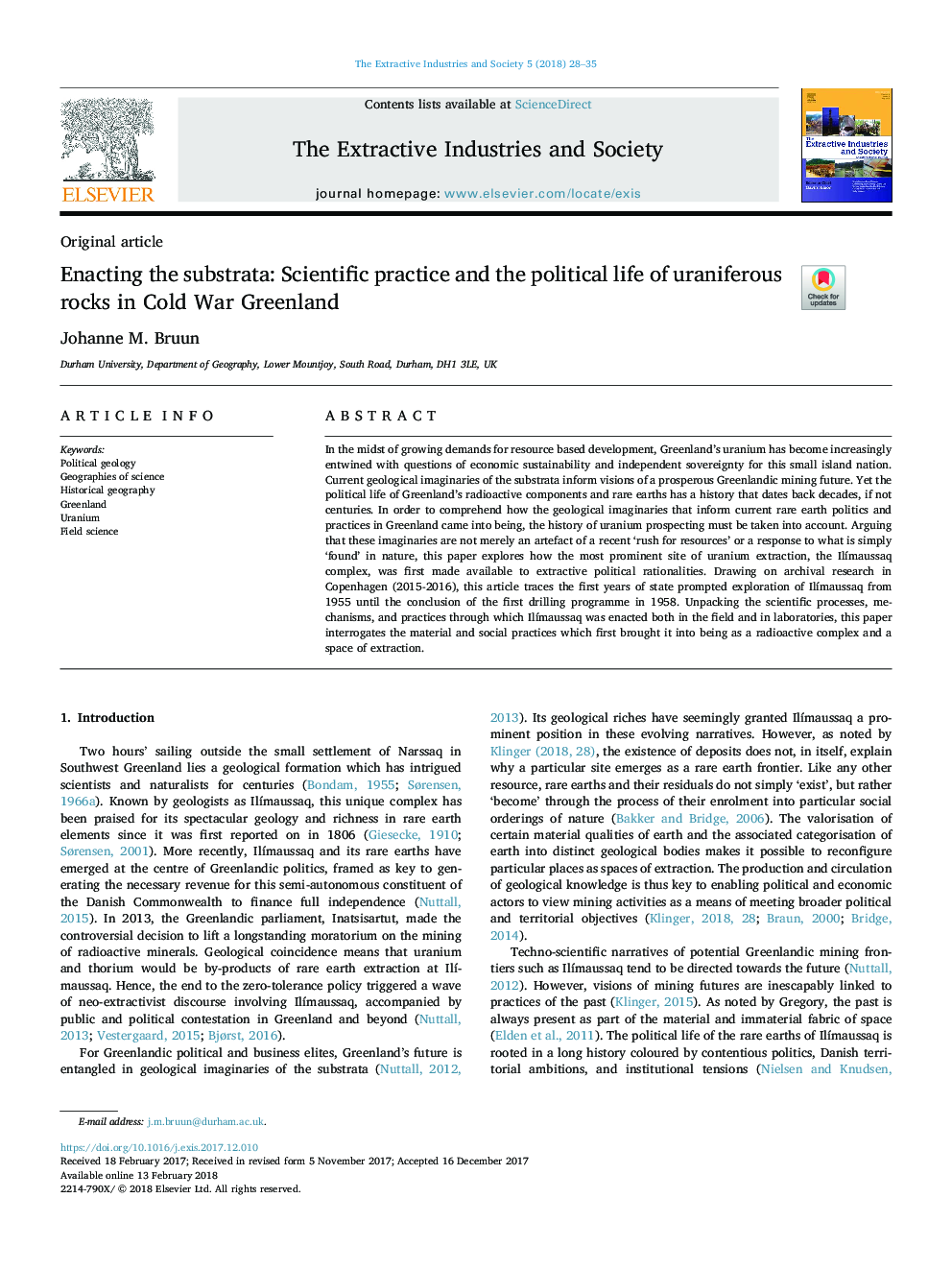| Article ID | Journal | Published Year | Pages | File Type |
|---|---|---|---|---|
| 7454195 | The Extractive Industries and Society | 2018 | 8 Pages |
Abstract
In the midst of growing demands for resource based development, Greenland's uranium has become increasingly entwined with questions of economic sustainability and independent sovereignty for this small island nation. Current geological imaginaries of the substrata inform visions of a prosperous Greenlandic mining future. Yet the political life of Greenland's radioactive components and rare earths has a history that dates back decades, if not centuries. In order to comprehend how the geological imaginaries that inform current rare earth politics and practices in Greenland came into being, the history of uranium prospecting must be taken into account. Arguing that these imaginaries are not merely an artefact of a recent 'rush for resources' or a response to what is simply 'found' in nature, this paper explores how the most prominent site of uranium extraction, the IlÃmaussaq complex, was first made available to extractive political rationalities. Drawing on archival research in Copenhagen (2015-2016), this article traces the first years of state prompted exploration of IlÃmaussaq from 1955 until the conclusion of the first drilling programme in 1958. Unpacking the scientific processes, mechanisms, and practices through which IlÃmaussaq was enacted both in the field and in laboratories, this paper interrogates the material and social practices which first brought it into being as a radioactive complex and a space of extraction.
Related Topics
Life Sciences
Environmental Science
Management, Monitoring, Policy and Law
Authors
Johanne M. Bruun,
